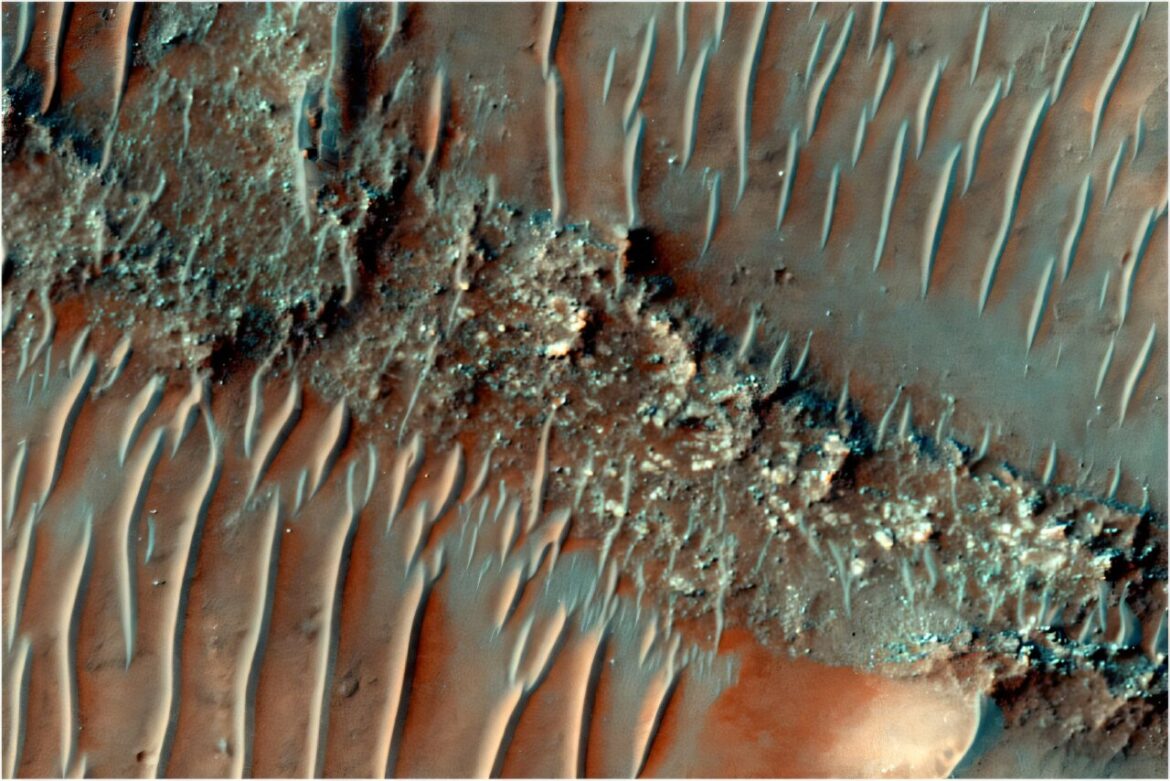New evidence gleaned from the Martian surface suggests the Red Planet’s past was far more aqueous than previously imagined. A comprehensive analysis of ancient river systems in the Noachis Terra region points towards a sustained period of substantial surface water, potentially reshaping our understanding of Martian climate history and the planet’s potential for past habitability.
The study, presented at the Royal Astronomical Society’s National Astronomy Meeting, focuses on fluvial sinuous ridges, sometimes called inverted channels. These geological formations, common across Martian terrains, are believed to be fossilized riverbeds. Over billions of years, sediment deposited by flowing rivers solidified. Subsequent erosion of the surrounding landscape left these hardened deposits standing as elevated ridges, marking the paths of ancient waterways. It’s importnat to understand how these are formed, to understand mars.
“Studying Mars, particularly an underexplored region like Noachis Terra, is really exciting because it’s an environment which has been largely unchanged for billions of years. It’s a time capsule that records fundamental geological processes in a way that just isn’t possible here on Earth,” explains Adam Losekoot, the lead researcher from the Open University.
Losekoot and his team meticulously mapped over 15,000 kilometers of these inverted channels in Noachis Terra, a highland region in the southern hemisphere. This area, unlike other parts of Mars, lacks extensive valley networks, which are typically used to infer past rainfall and runoff. The abundance of river ridges in Noachis Terra, therefore, presents a compelling alternative source of evidence for a wetter past.
The Silent Process began years ago, with initial satellite images hinting at the presence of these formations. The Sudden Manifestation came with the realization of the sheer scale and interconnectedness of these ancient river systems. This discovery, now in Public Awareness, forces scientists to reconsider prevailing models of Martian climate evolution.
Here’s what the new research indicates:
- Extensive Waterways: The mapped river ridges span over 15,000 kilometers, indicating a widespread network of flowing water.
- Stable Surface Conditions: The consistent morphology and broad distribution of the ridges suggest formation over a geologically significant timeframe.
- Precipitation as Source: The spatial distribution of the ridges suggests rainfall as the primary water source, rather than melting ice sheets.
- Noachian-Hesperian Transition: The findings indicate stable surface water during a pivotal period of Martian history, approximately 3.7 billion years ago.
The team utilized data from several Mars orbiters, including the Context Camera (CTX), the Mars Orbiter Laser Altimeter (MOLA), and the High Resolution Imaging Science Experiment (HiRISE). These instruments provided detailed topographical data and high-resolution imagery, enabling the researchers to identify and map the intricate network of ancient river systems.
The implications of this research are substantial. It challenges the dominant narrative of a predominantly cold and dry early Mars, punctuated by brief, isolated periods of warming. The extensive river systems of Noachis Terra suggest a more sustained period of warmer, wetter conditions, potentially creating environments conducive to the emergence of life.
One local resident, Marya S., commented on X.com: “Wow! Imagine rivers flowing on Mars. Makes you wonder what else we’ll find.” Her post garnered hundreds of likes and shares, reflecting the public’s fascination with the prospect of a habitable past on the Red Planet. Others have expressed skepticism on Facebook groups, questionning the interprtation of the data and calling for more robust evidence.
The idea that Mars hosted an extensive network of rivers has resonated with many, fueling discussions about the possibility of past Martian life. “It makes you think, doesn’t it? Maybe we’re not so alone,” shared another user on Instagram, attaching a digitally altered image of a flowing river on the Martian surface.
While the presence of ancient rivers doesn’t definitively prove the existence of past life on Mars, it significantly strengthens the case for a more habitable past. Further research, including future missions to Noachis Terra, will be crucial in understanding the full extent of Mars’ watery history and its implications for the search for extraterrestrial life.
“Our work is a new piece of evidence that suggests that Mars was once a much more complex and active planet than it is now, which is such an exciting thing to be involved in,” Losekoot stated.
The discovery has also sparked debate within the scientific community. Some researchers remain cautious, arguing that alternative explanations for the formation of these ridges cannot be entirely ruled out. For instance, some speculate that subsurface groundwater processes might have played a role in shaping the Martian landscape. The need for independent verification and further data analysis is crucial. It is a long road a head.
However, the overwhelming consensus is that the evidence for widespread surface water on early Mars is becoming increasingly compelling. The sheer scale and interconnectedness of the Noachis Terra river systems provide strong support for this hypothesis. “Something fundamental had shifted,” said Dr. Anya Sharma, a planetary geologist not directly involved in the study, “the notion of a constantly frozen Mars is starting to look increasingly untenable.” She added on the matter.
The question now turns to the duration and stability of these watery conditions. Were these rivers flowing for millions of years, providing ample time for life to potentially emerge? Or were they ephemeral features, existing for relatively short periods? Answering these questions will require further investigation of the Martian surface, including detailed analysis of the sediments and minerals within the inverted channels. These could offer key insights into the paleoclimate of Mars and the potential for past habitability. The truth is out there, some say.



